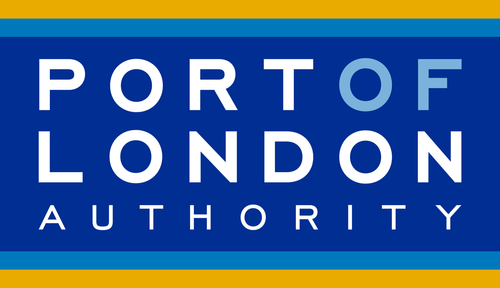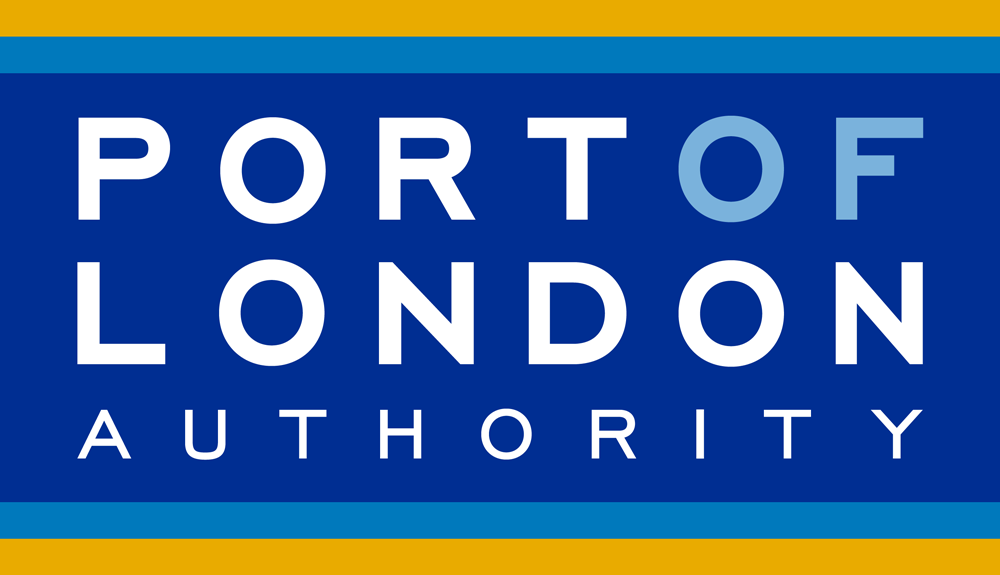Live Tides
NOTICES TO MARINERS
Charts & Surveys
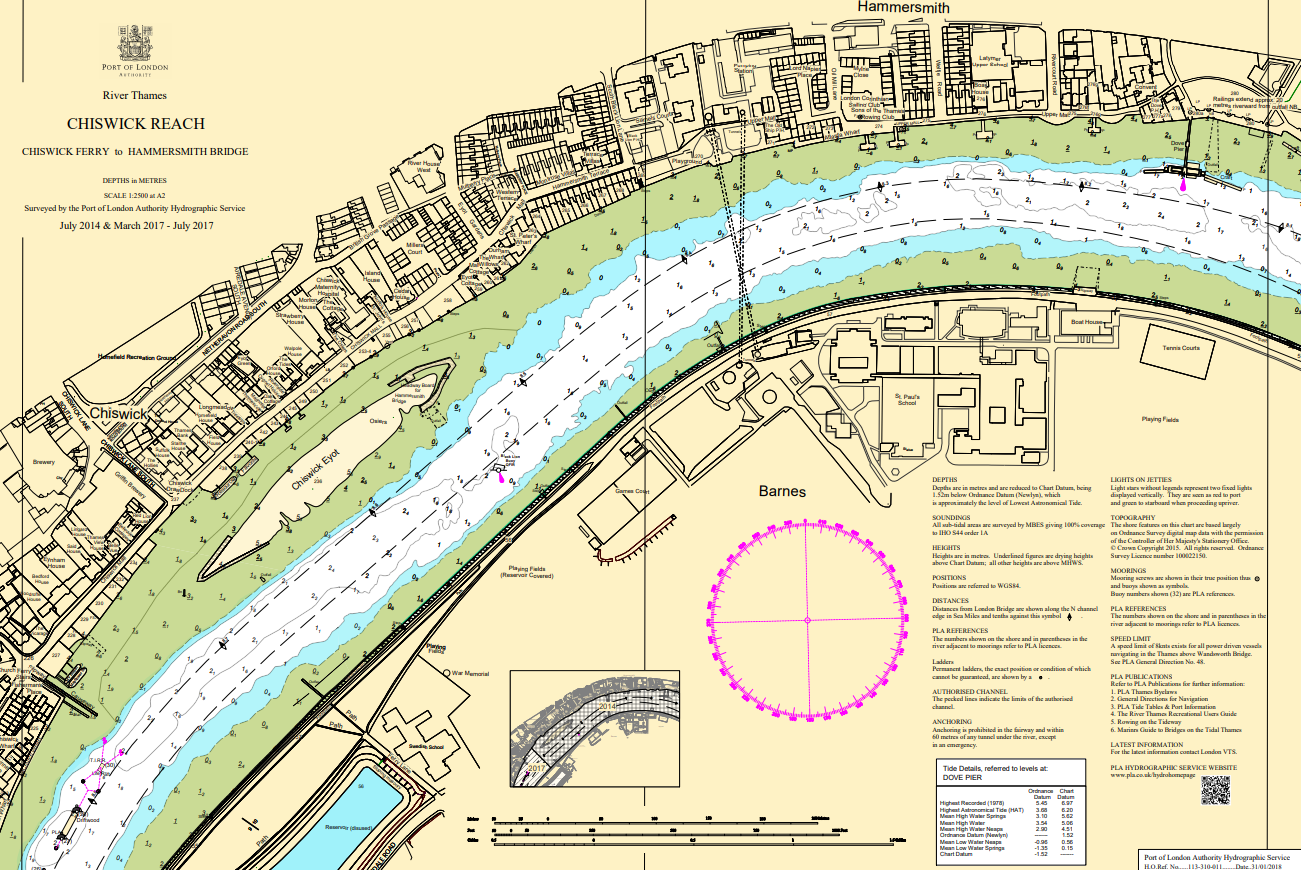
Incident reporting
Life-threatening emergencies on the river:
Call 999 and ask for the Coastguard
For near miss, safety observations and incident reporting click below
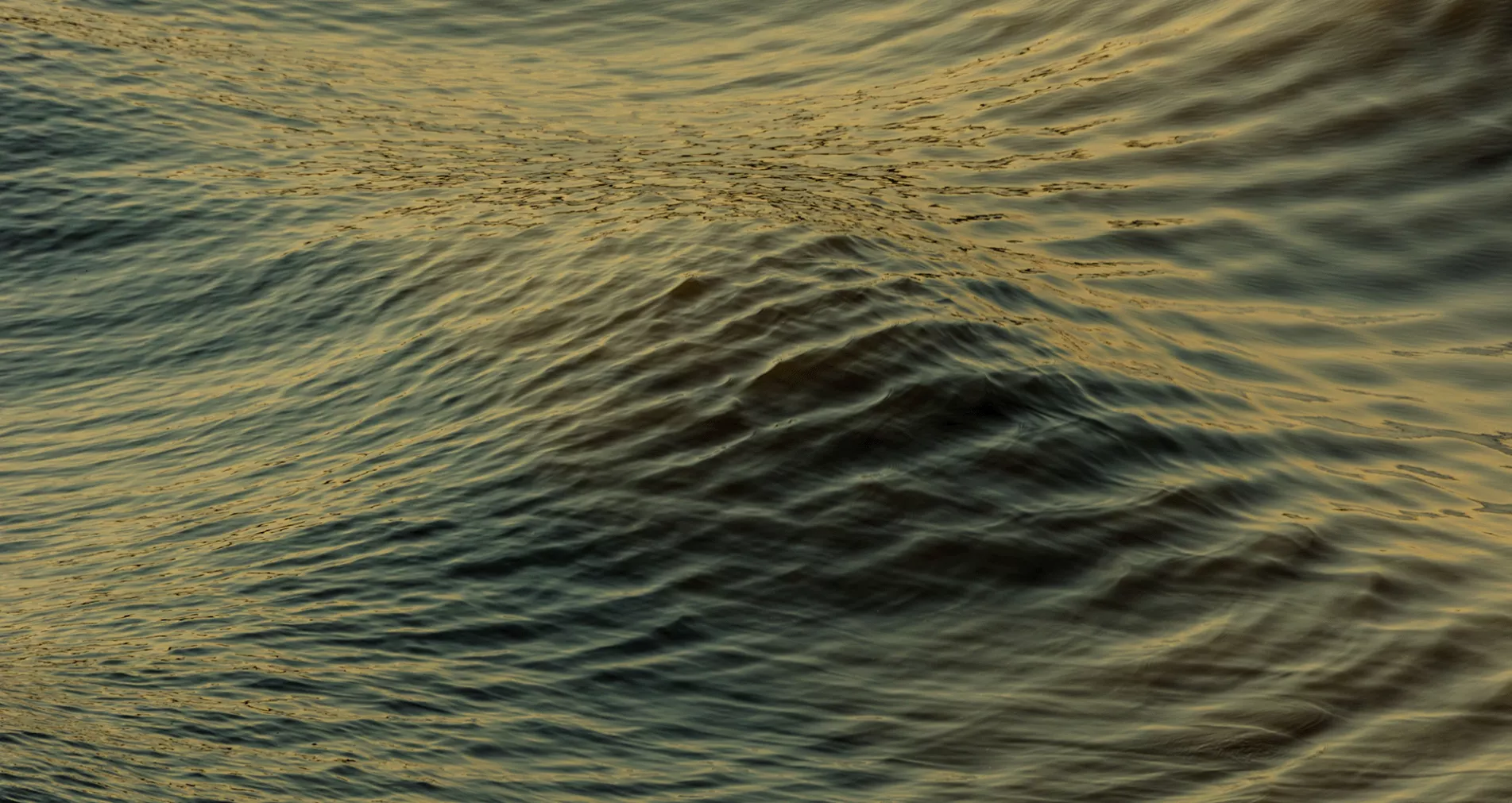
Tidal energy
It is apparent that the Thames could provide local tidal energy opportunities, though it is unlikely to be via traditional larger turbine technology. This is because the estuary creates different challenges and opportunities for innovation
The PLA is seeking to encourage the use of microgeneration in suitable for the tidal Thames in using existing infrastructure while minimising environment impacts for migratory species and protected habitats.
Past attempts to deploy untested new technology would have required significant investment for the applicant and regulators to ensure the safe use in the tidal Thames. Potential projects often became caught in a no-win discussion about measurement and demonstration of impact before the equipment could be evaluated, and the power benefit could be defined. The PLA has been aware that these issues prevent successful deployment or tests of potentially important technology on the Thames in the journey to a more resilient and energy efficient operation.
Using our extensive knowledge of the river, the world leading hydrographic team have modelled the rivers power for all areas except the authorised channel for microgeneration to identify locations for deployment. The model was initially run for 2meters per second but limited sites where found with this speed for significant periods of time. The second run used 1meter per second, this found a number of sites where this occurred for more than one hour in each direction. This model and the methodology used is available to view here.
As the generation is needed in the centre of the estuary the use of the river by others and wildlife is a key consideration for the PLA. The technology must not affect other structures for example by depositing sediment. The impact of noise and pressure must also be minimised for the technology due to the close proximity of residents and the effect on migrating fish and mammals. Without testing the equipment in the river or providing evidence of extensive use elsewhere in comparable conditions it is difficult for the PLA and other regulators to permit direct implementation at this point in time.
The power of microgeneration, if successfully implemented across the estuary, will significantly contribute to the goal of transforming the Port of London to a low emission economy and environment. However, the use of any technology must not conflict to current use of the river, wildlife and residents on the estuary, so the PLA has designated a site for trials of the microgeneration technology, that is a lower risk than where commercial deployment might eventually be possible The site is not necessarily a high potential site for generation, but permits the PLA , the developer and other regulators to gather an understanding of the technology in the Thames and its further deployment.
Successful trials with provision of all the relevant required reporting will then be considered for river works licences.
If you are interested in trialling tidal power technology on this site, please contact the Environment team via [email protected] and review the details in these documents.
Trial site
In 2021 we designated a site in the river to facilitate scale and full-size trials of the types of schemes that could be used in an environment, used and built up as it is of the tidal Thames. Applicants are expected to trial both their scale and full size systems on site, or at least the full-size systems before they can be deployed elsewhere in the Thames to facilitate risk management and full scale testing, if there isn’t available data to meet the requirements of the PLA and other regulators.
Applicants are expected to trial both their scale and full size systems on site, or at least the full-size systems before they can be deployed elsewhere in the Thames to facilitate risk management and full scale testing, if there isn’t available data to meet the requirements of the PLA and other regulators.
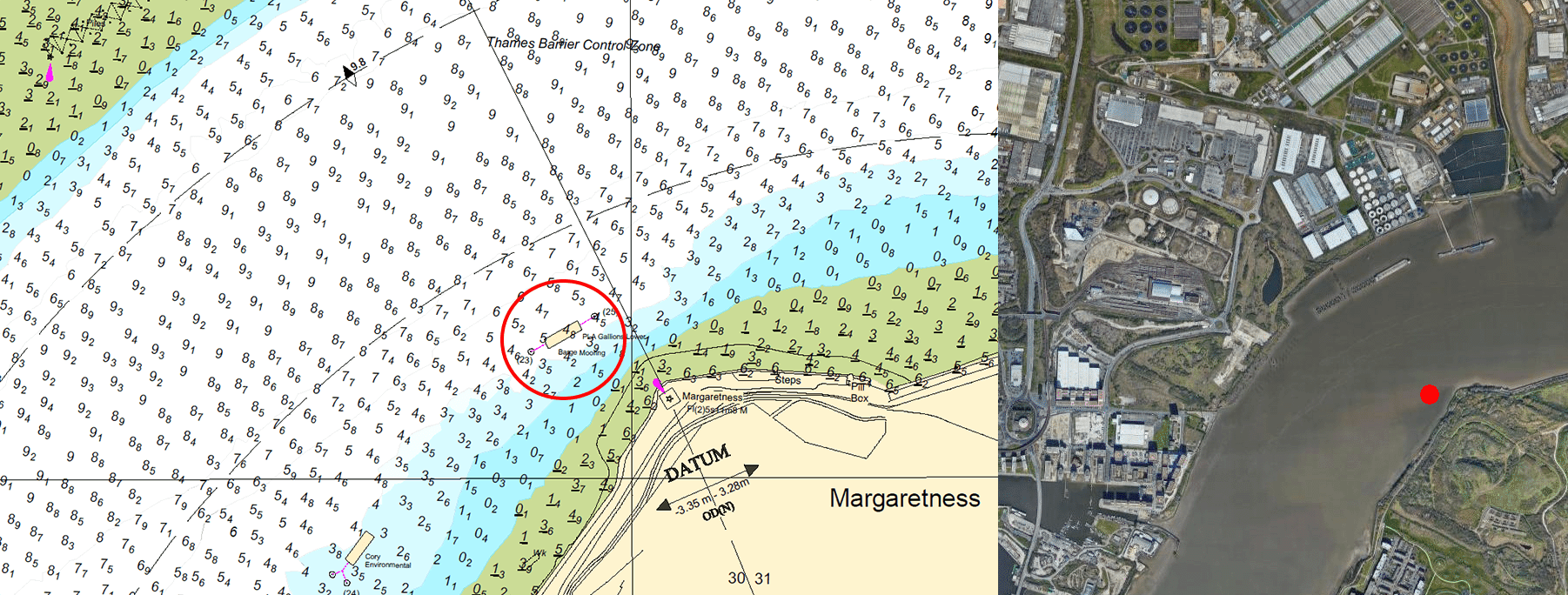
The site is based in Thamesmead, on the south side of the river in the Royal Borough of Greenwich. The reach is Gallions Reach, and the mooring is just inside the Thames Barrier Control Zone.
Passing vessels will include large ships for the, cruise, sugar and aggregate berths upriver, inland and recreational vessels. The site is a collar barge mooring not routinely used at present, outside of the authorised channel (but within navigable water). This is similar to most moorings available on the river and alongside piers/pontoons where the PLA believes could benefit from micro tidal generation. The site is in the area 3 chart of the PLA's Heat Map.
The full details of the site environmental factors, flow rates and requirements for use are provided in the handbook here. Guidance documents and reference material is provided below.
Tidal energy heat map
In 2016 to support the Thames Vision the PLA has undertaken a detailed model of where flows reach 1m/s for more than an hour in a tidal cycle. Modelling excluded the navigational channel to avoid any interaction with most river users. The results indicated that there are limited areas where the flow is sustained from long periods.
The overview of the areas studied is below. Please click on the relevant area of interest to view the findings in more details.
If developers, site owners or engineers wish to develop and test tidal energy on the Thames they are welcome to review the data in the model, on the test site and with the PLA. All enquiries via [email protected].
The full methodology in developing the assessment and conclusions can be found here.
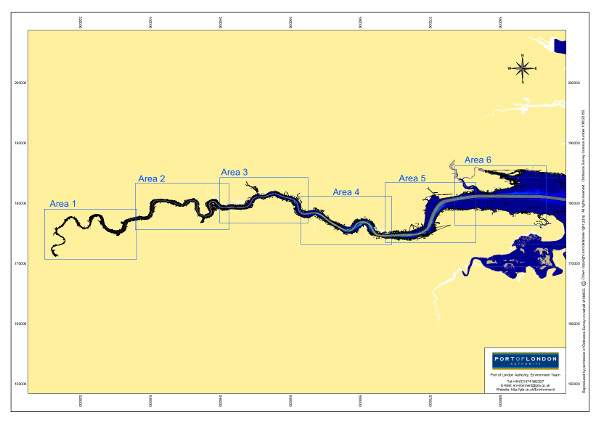
Tidal energy and its importance
As previous Port of London Authority research on potential power supplies available to site operators and pier owners, it is apparent that the Thames could provide local tidal energy opportunities, though it is unlikely to be via traditional turbine technology. This is because the space available on the river has become more constrained. The PLA is seeking to encourage the use of microgeneration in ways that suits the Thames in use of existing infrastructure and meet requirements.
The power of microgeneration will significantly contribute to the goal of transforming the Port of London to a low emission economy and environment. However, the use of any technology must not create issues and impacts to current use of the river, and wildlife and residents on the estuary.
Past attempts to deploy untested new technology would have required significant investment for the applicant and regulators to ensure the safe use in the tidal Thames. Potential projects often became caught in a no-win discussion about measurement and demonstration of impact before the equipment could be evaluated, and the power benefit could be defined. The PLA has been aware that these issues prevent successful deployment or tests of potentially important technology on the Thames in the journey to a more resilient and energy efficient operation.
In 2021 we designated a site in the river to facilitate scale and full-size trials of the types of schemes that could be used in an environment, used and built up as it is of the tidal Thames.
Applicants are expected to trial both their scale and full size systems on site, or at least the full-size systems before they can be deployed elsewhere in the Thames to facilitate risk management and full scale testing, if there isn’t available data to meet the requirements of the PLA and other regulators.
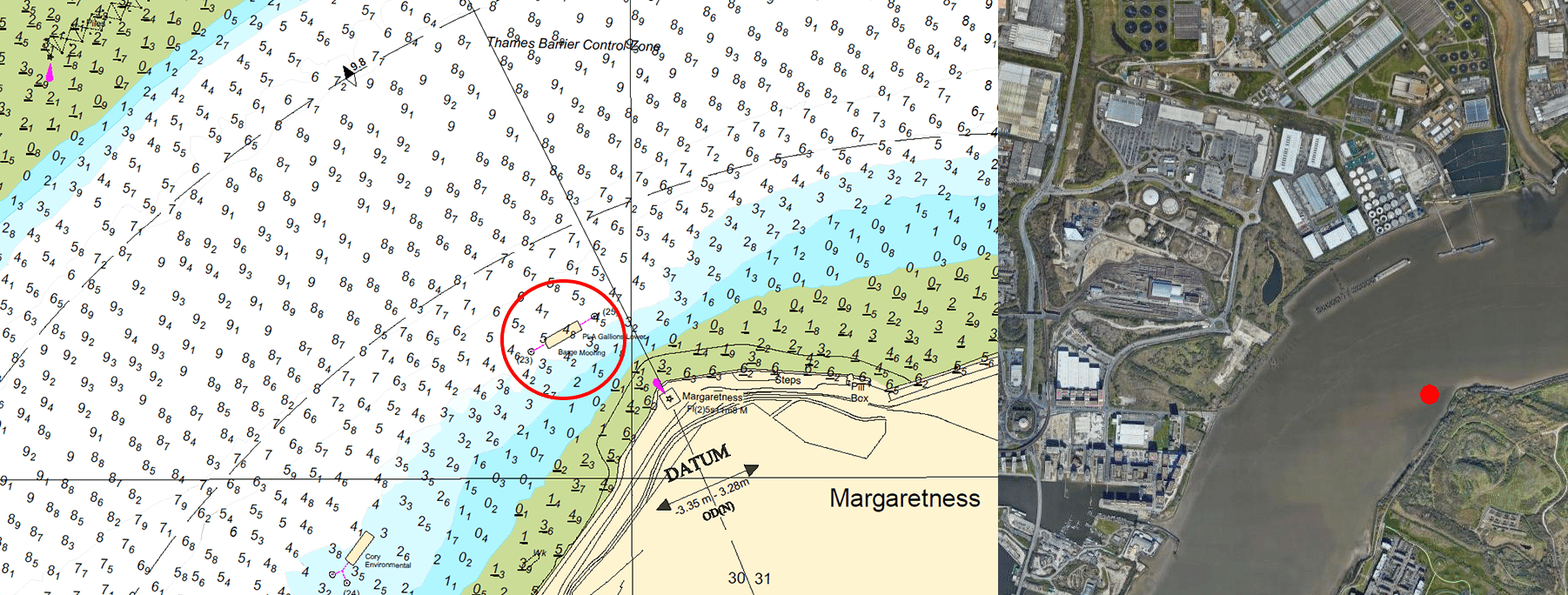
The site is based in Thamesmead, on the south side of the river in the Royal Borough of Greenwich. The reach is Gallions Reach, and the mooring is just inside the Thames Barrier Control Zone, where the speed limit is 15 knots. Passing vessels will include large ships for the, cruise, sugar and aggregate berths upriver, inland and recreational vessels.
Vessels will also be entering and leaving both Gallions Marina and the Royal Docks on the north bank of the river. The mooring is below the flight path of London City Airport and height restrictions apply. The site is in the area 3 chart of the PLA's Heat Map.
The site is a collar barge mooring not routinely used at present, outside of the authorised channel (but within navigable water). This is similar to most moorings available on the river and alongside piers/pontoons.
The tethering system is via groundwork chains which can be adjusted to accommodate vessels between 10 and 30 metres in length. Potential applicants are required to discuss their preferred arrangements so any mooring adjustments can be made in advance.
The full-scale trial must be tethered to the mooring buoys both upstream and downstream and not exceed 30m for use at the moorings.
The PLA will facilitate a change to the moorings for the scale test between February and April. No full scale will be permitted during this spring season.
Provide two agreements under confidential requirement. The agreements are spilt between a scale test and a full scale trial.
Promote the use of the mooring and announcements of trials when in situ.
The PLA retains the right to use the moorings for other purposes if not under any agreement for tidal energy.
Should the technology be abandoned or not be managed in line with the agreement the PLA retains the right to remove the equipment at the operators cost.
In order to gain an agreement the operator must provide the information (under NDA if necessary) to reassure the PLA:
- dimension and mechanism of system proposed;
- reassurance that the pull/strain is within the mooring limits with drag calculation;
- facilitate the use appropriate lights and radar reflection in the design;
- undertake regular inspection of mooring lines and maintain ropes and securing points in order to prevent break out from the mooring.
The operator must notify the PLA of intended periods of use at least 2 months beforehand and have the relevant agreements and consents available for inspection by the PLA.
The operator is responsible and suitably insured for any damage that must be put right to the infrastructure and river assets in the vicinity of the mooring as a result of its activity.
The operator is expected to collect and share relevant data during the full-scale trial to satisfy the following requirements from the PLA, and any additional requirements by the EA and any other regulator during the full-size trial and for any wider deployment;
- Sediment and bed movement before and after the use
- Raw data and report, including analysis of distance of effect for EA Flood Defence requirements.
- Location tracking to monitoring twist and strain within moorings
- Report, data must be available on demand in the event of an incident
- Screening and fish monitoring as required in terms of management of entrainment or acoustic impacts, in line with EA guidance.
- Data and reporting
- Noise monitoring*
- Underwater/acoustic and ambient monitoring
- Observations of power generation and suitability of deployment at preferred site or area of river
- Report including analysis of potential application
These data requirements are not required for the short term, scale trial in the spring season, unless the size/type demands the need.
* dependant on type of system used and its intended use in the wider Thames Estuary.
Successful trials with provision of all the relevant required reporting will then be considered for river works licences and can approach staff leading the PLA’s Investment Plan if relevant.
Initial enquiries are to the Environment team via [email protected]
The Thames has one of the larger tidal ranges in the UK however it is also a busy waterway and the fastest tidal flows tend to be in the deeper parts of the river which are also used for navigation. Public navigation, in particular smaller recreational vessels, are not constrained to the advertised channel and so appropriate areas of potential are broadly limited to the edges of the river where water depths and maximum flow rates are much less (Fig 1).
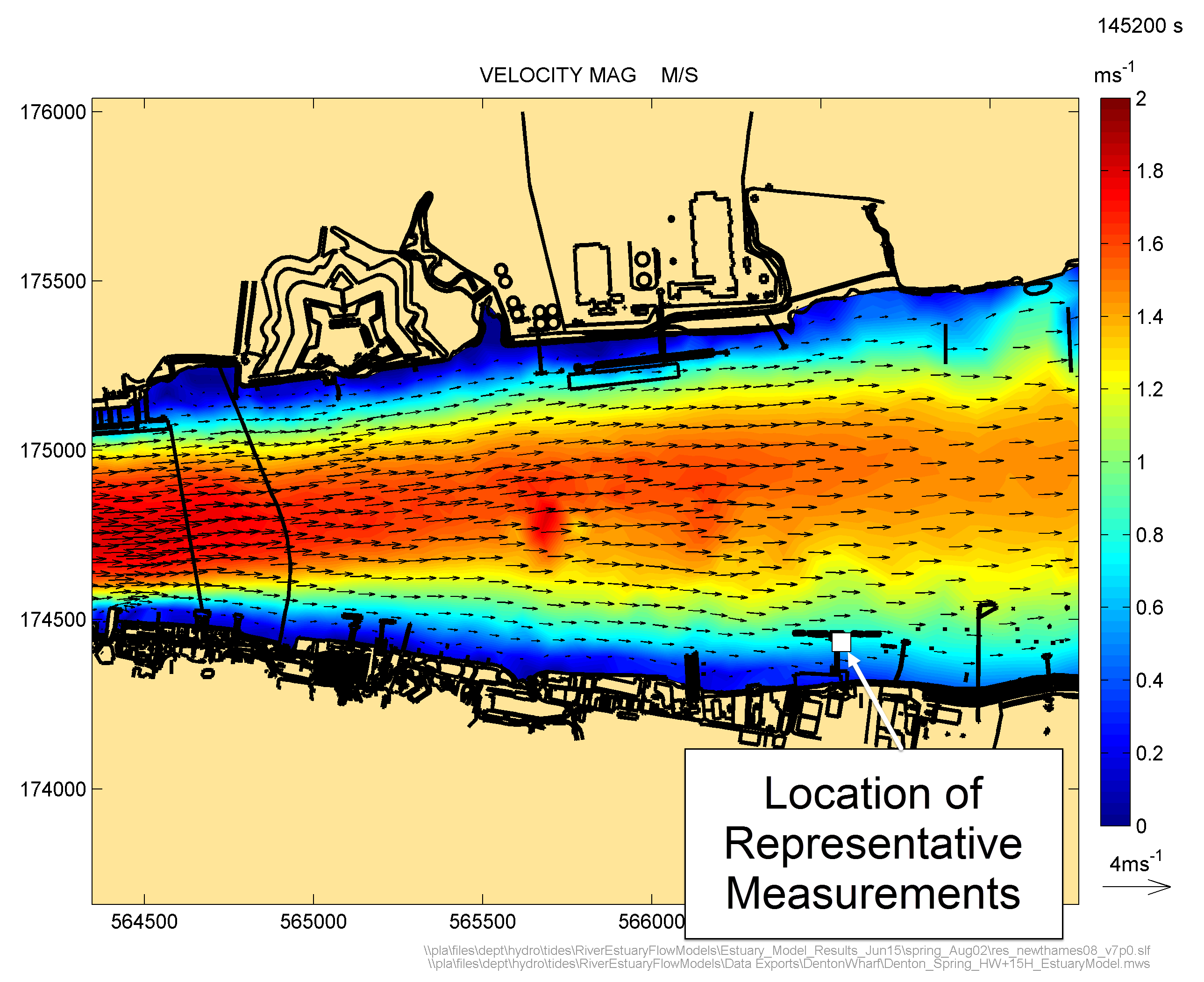
Previously studies have been carried out, using a ADCP fixed system monitoring flow rates over a spring tidal cycle in 1m water depth at low tide and 8m at high tide. It is felt that the recorded flows are indicative (Fig 2) of the potential that is available, recognising that different locations will have their own unique characteristics. Any application to install tidal energy on the Thames would be expected to minimise its effect on the river and its users.
Discover

